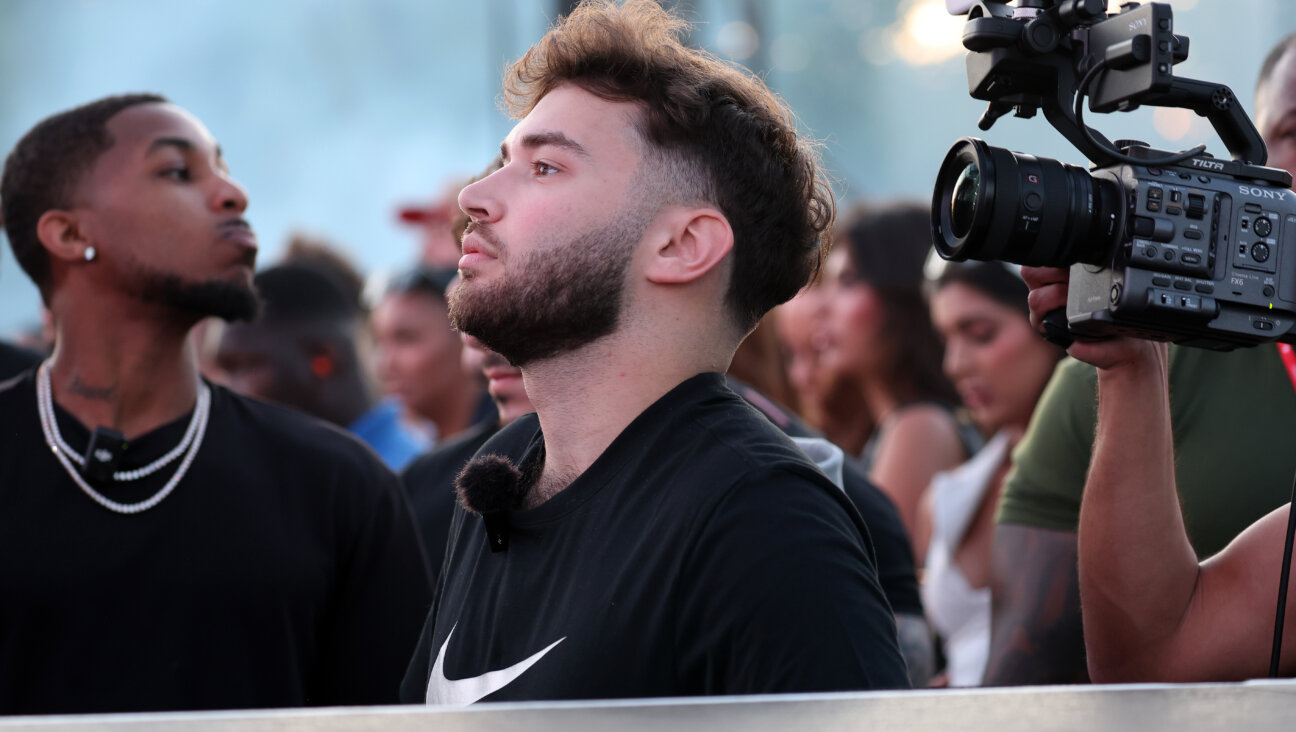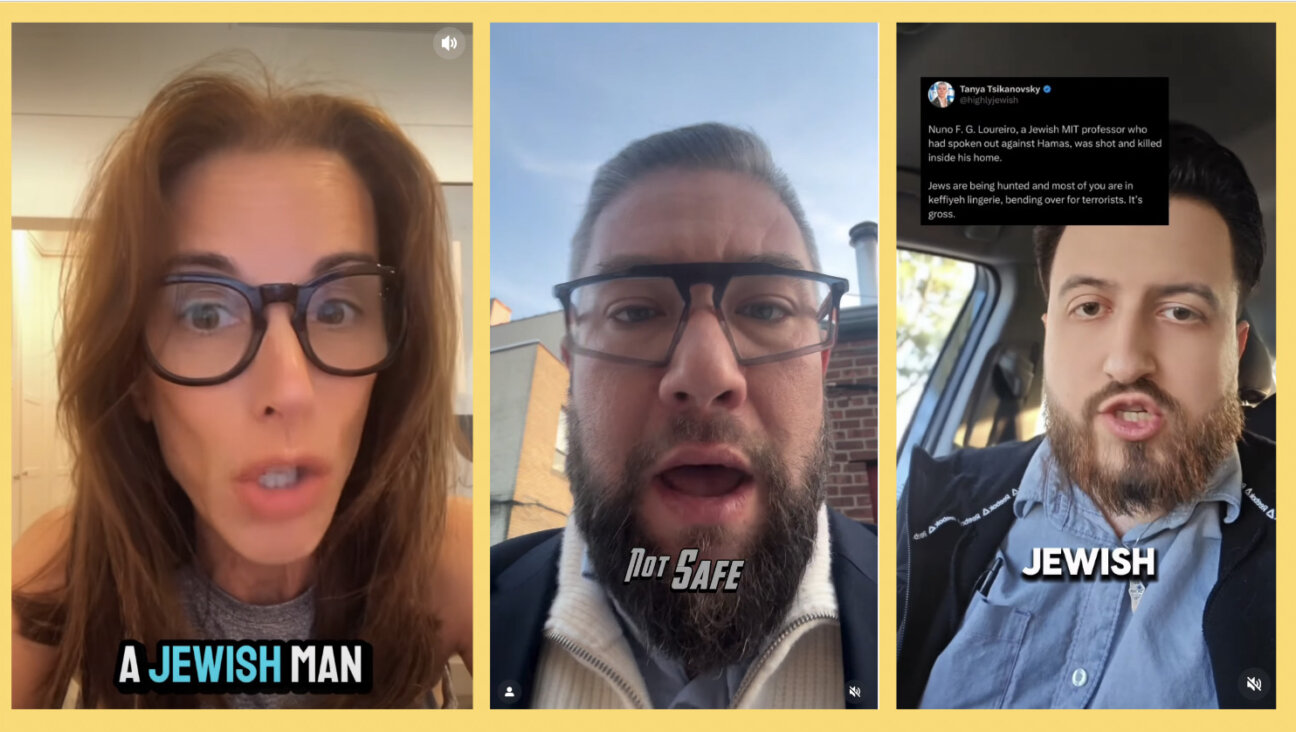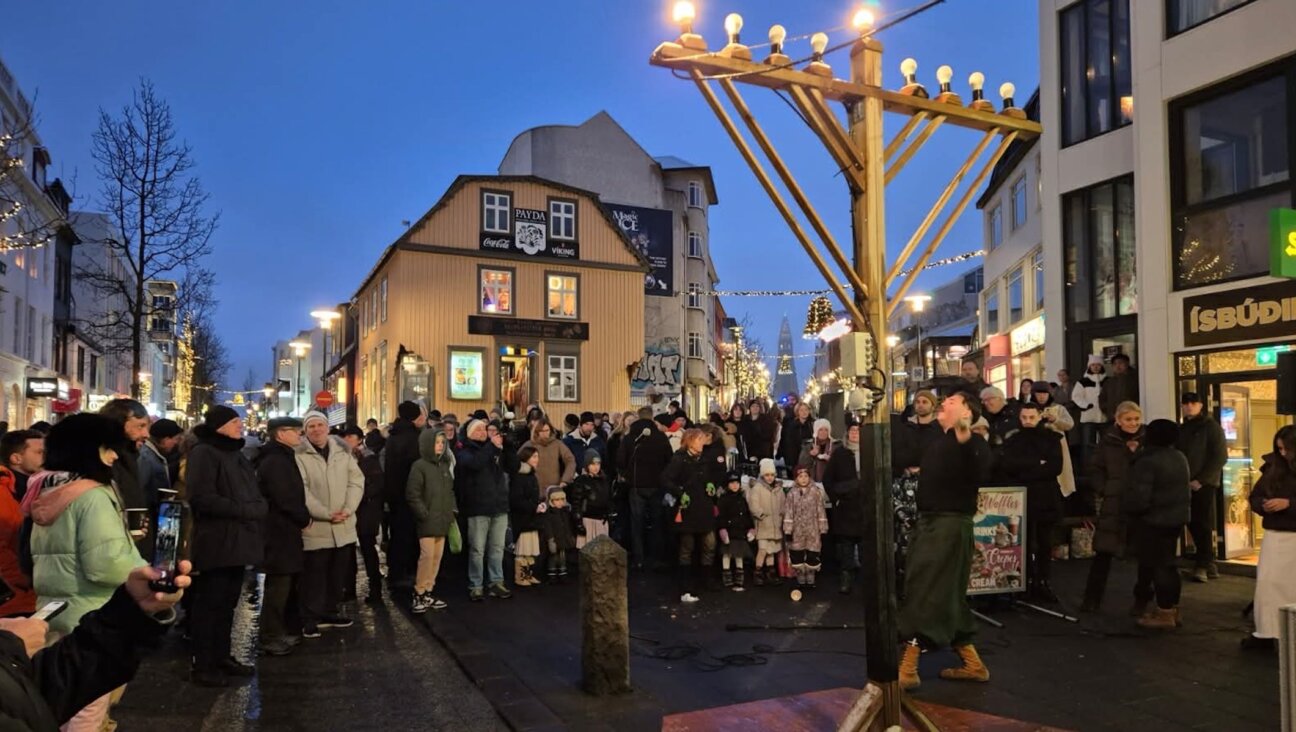What Does It Really Mean To Be A ‘Jewish Writer’?

Author Philip Roth Image by Getty Images
I loved Lenore Skenazy’s recent essay about how immersion among gentiles can make even the most secular Jew feel suddenly Jewish — and conversely, how being in a very Jewish environment can make us feel, well, not Jewish.
Then this week Phillip Roth insisted that he doesn’t “write Jewish”; rather, he writes American and regional.
The ongoing discussion about self-identification echoes deeply for me. Two years ago, I wrote for the Sisterhood about arriving at my MFA grad program in Vermont and discovering myself to be one of only a handful of Jewish students, none of whom were my age. This meant no bar-mitzvah jokes, no oy gevalts, no one asking me what I wanted for Hanukkah — but lots of kindred spirits despite the cultural divide.
As I expected I might, I taught my new friends how to spin dreidels and how to say “baruch hashem!” and I learned about their family traditions and holidays, too. I wore my first Christmas sweater, even.
But being in this environment also affected my writing. Even before I began my matriculation, I was grappling with the idea of white privilege in art — the concept that authors, filmmakers and so forth have license to just plunk white characters down in a work without having to allude to family, background or how they got to where they are. This is because, in western culture, white is considered neutral, the default, normalized — with everything else a deviation.
To combat this, I decided that my characters ought to have identifiable cultural backgrounds rooted to specific histories. So I began by writing a story that revolves around two friends who reconnect at a shiva call, a story in which Jewish mourning rituals all figure heavily.
The very rough draft was read by my peers at my initial Vermont workshop: we sat in a circle in a hot, sunny room with a view of the Green Mountains out of the window. While the story got a quintessential first critique (“the writing is good, but is this a story?”), I also got a real glimpse of how provincial my New York Jewish world seemed to others: Almost half of my workshop had never heard of sitting shiva. In fact, at least two thought I was referring to Shiva the destroyer, the Hindu deity. Most were extremely befuddled.
The same misunderstandings resurfaced a year later when, after a break from the Jewish stuff, I workshopped another story about a Seder. All of the symbolism I thought I’d cleverly snuck in about being in the desert and searching for the Promised Land completely failed to resonate with classmates who had no idea what a Seder was even about.
I had faced the fact that writing scenes with such a level of cultural precision would perplex unfamiliar readers. To get away with writing what I felt was the truth, then, I had to make my Jewish references so clearly understandable in context that the customs and phrases would be absorbed by readers even without prior knowledge. Could I do that without being irritatingly didactic?
I held my breath, kept going, and hoped that I could find some universality in the parochial. Because at that point I felt like I was in the middle of getting at something good in my writing, and maybe because I was a little defiant, I ended up spending the better part of my two years crafting those same tales despite the misunderstandings, forging the draft of a linked story collection saturated with Jewish themes and symbols.
As I schedule Jewish writing events and secular ones into my calendar, and submit my work to both Jewish and other publications, I have to keep in mind that art, like human experience itself, doesn’t fall neatly into a Jewish or gentile or American column. To use detail and imagery that strikes a chord with those who know exactly what we’re talking about and those who have no clue: That’s a lofty writing goal that knows no cultural boundaries.

















